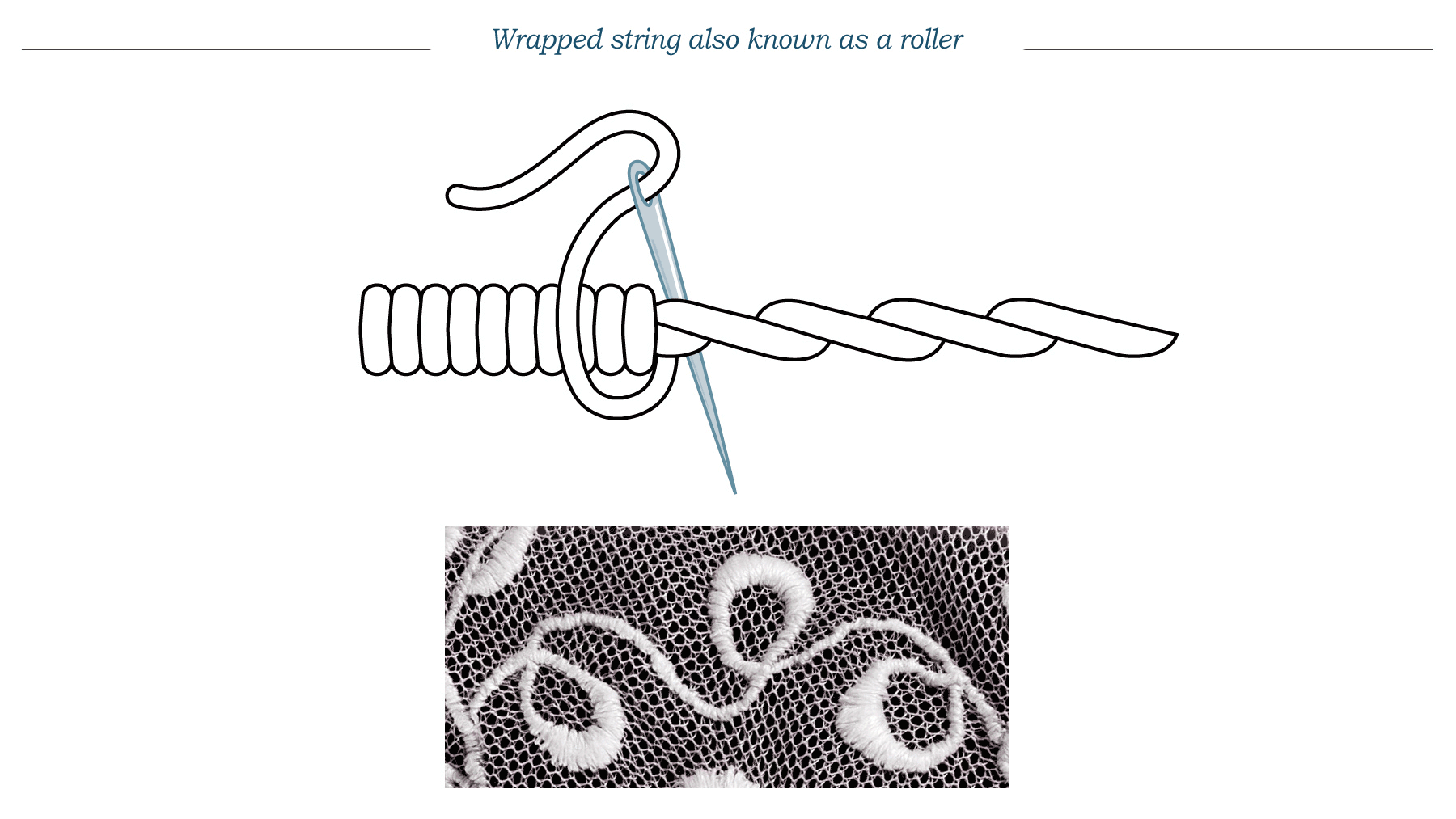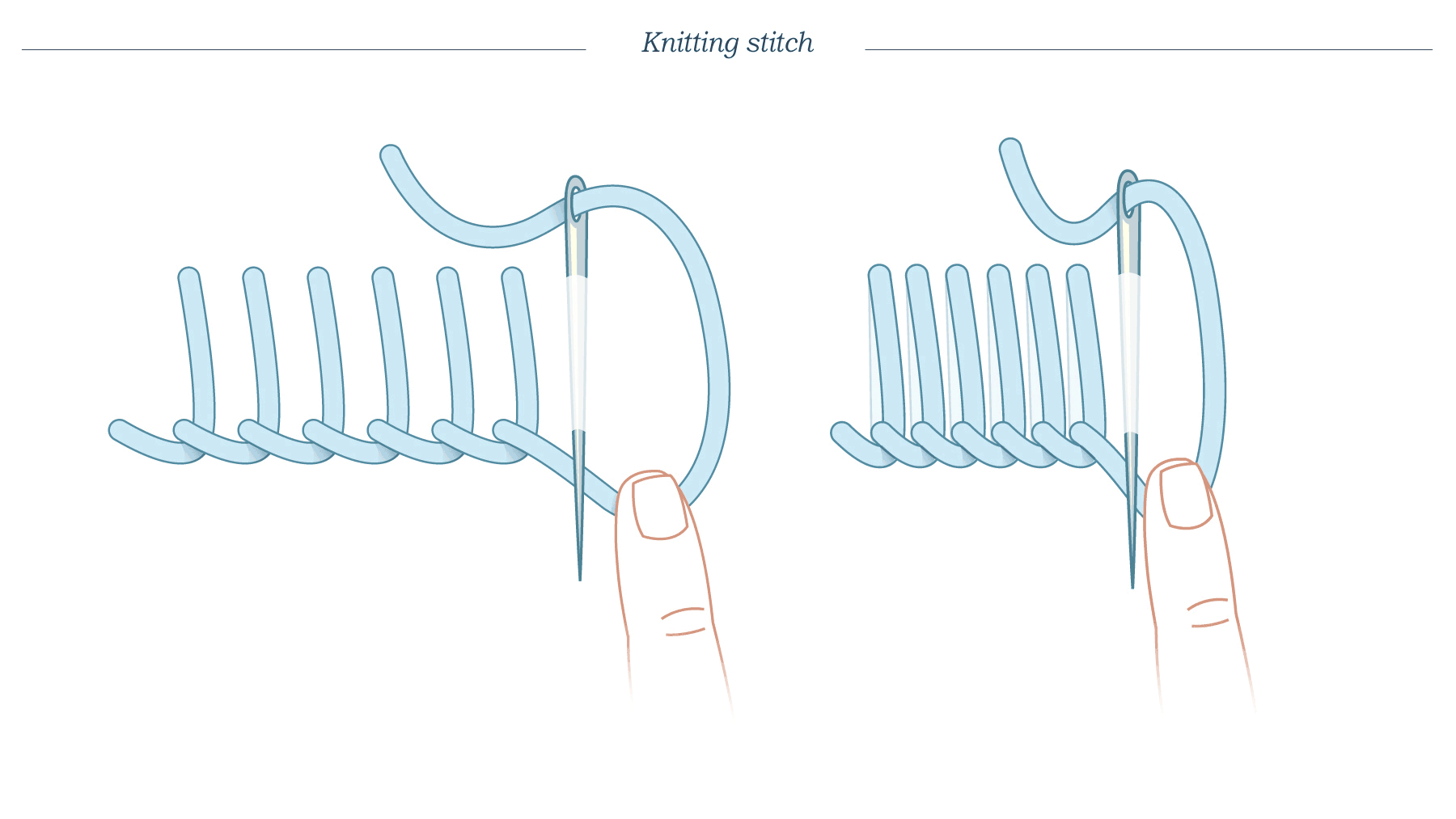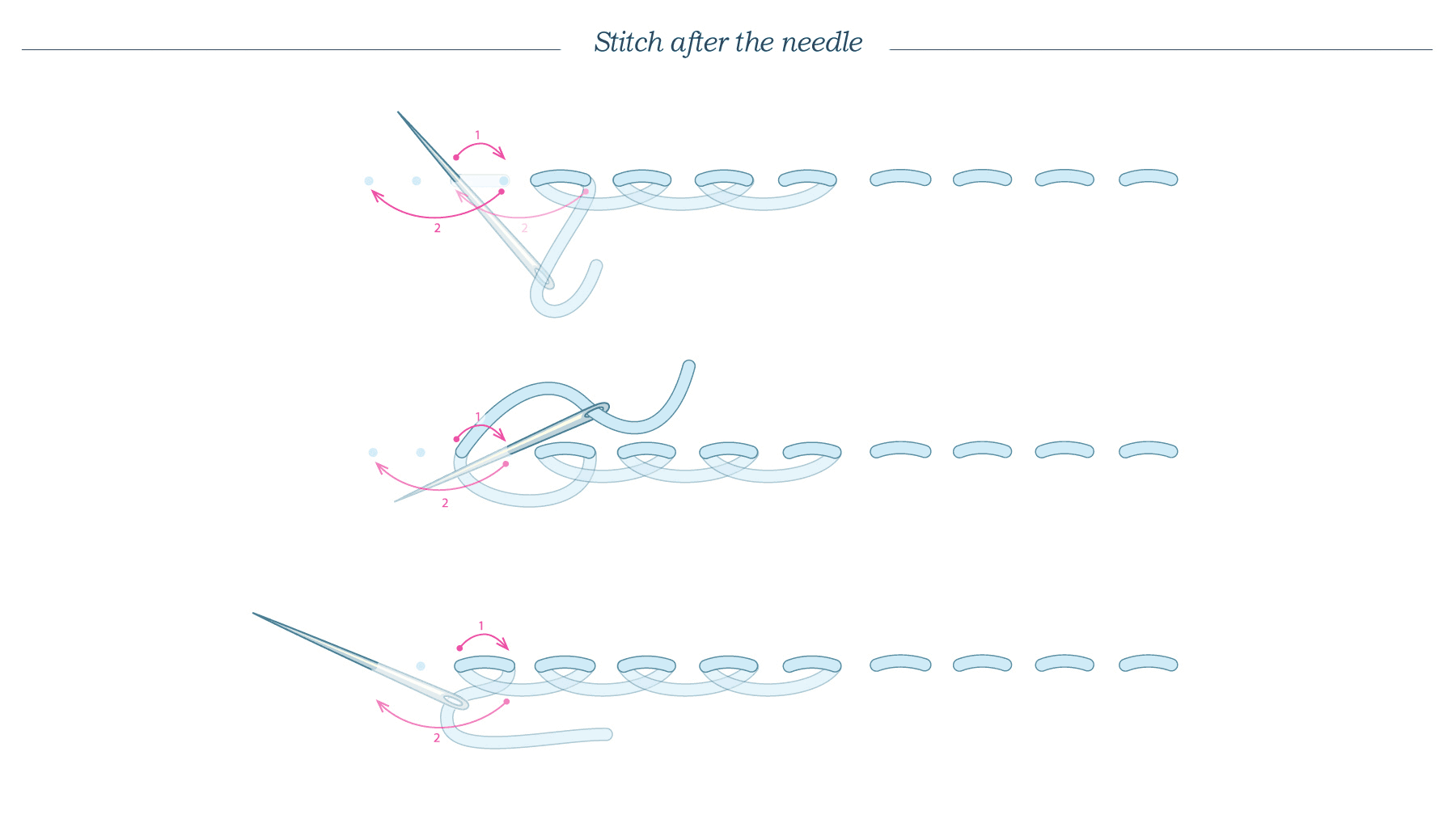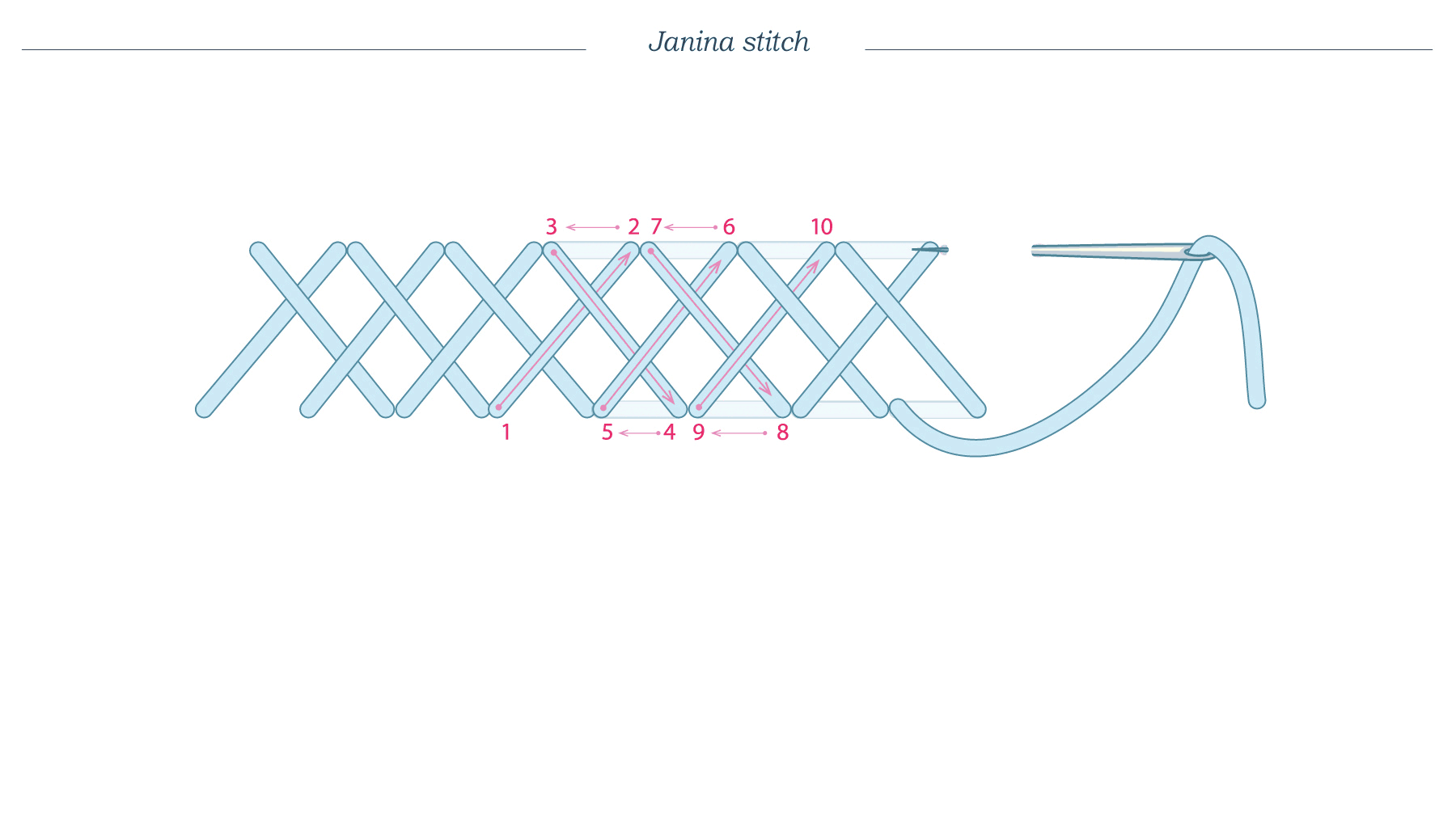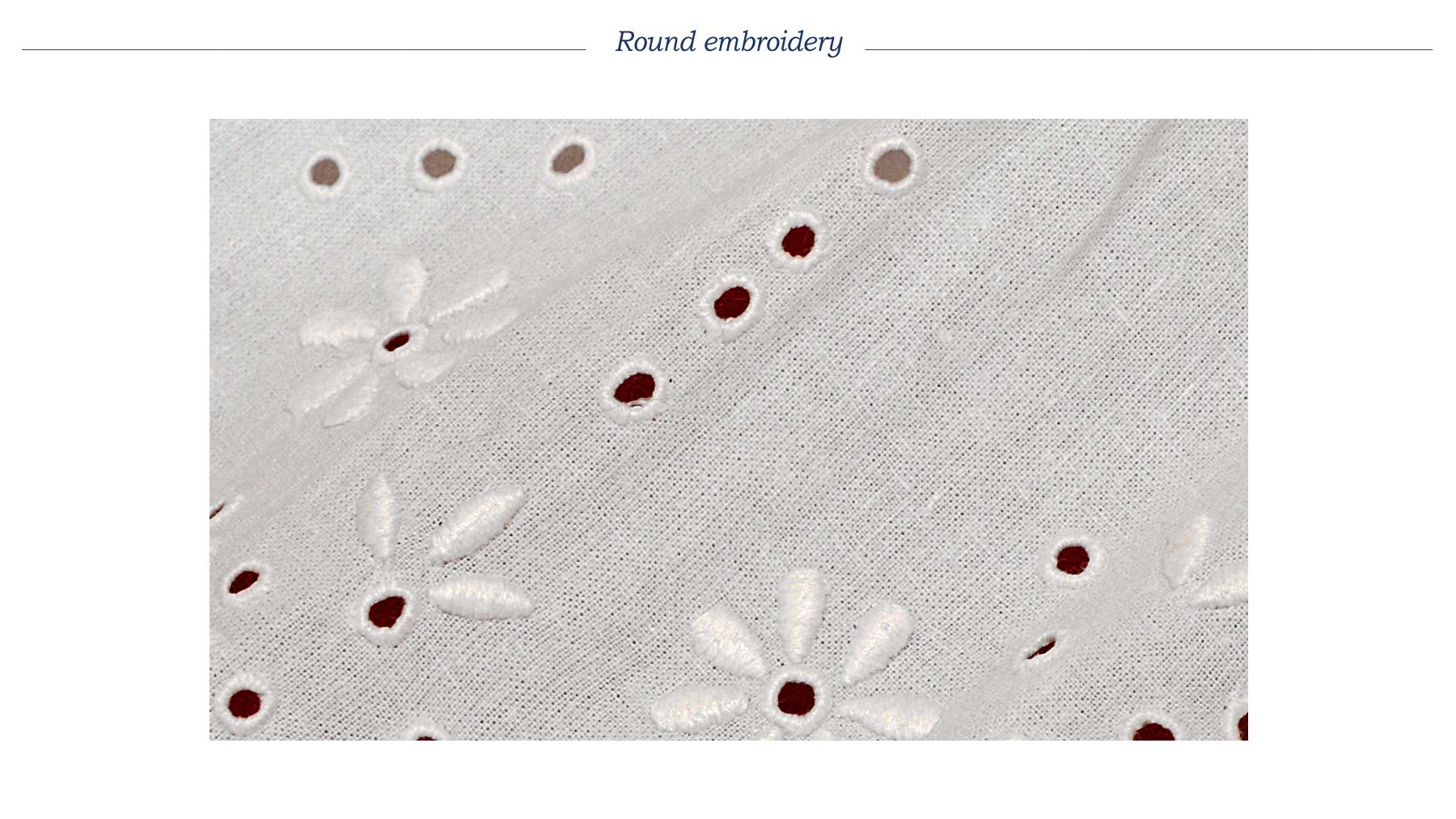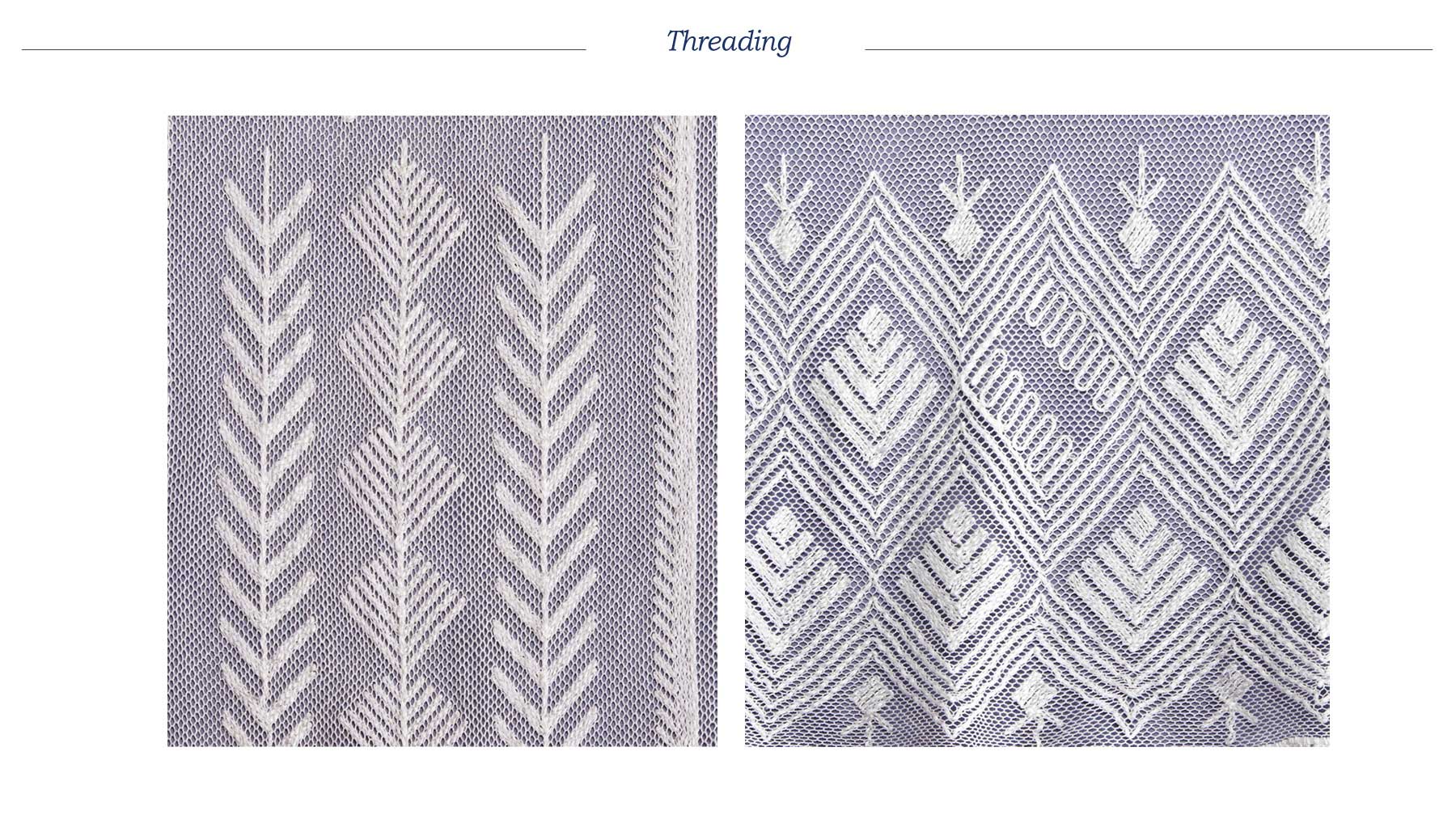Stitch or the system of pulling the thread through the fabric with a needle

Stringing – this pattern is created by inserting the needle in the middle of the previous stitch; all the stitches must have the same length if the pattern is to have an esthetic look.
Wrapped string also known as a roller (narrow satin bedding), is created when the string is wrapped transversely.
Laidwork stitch – is created when the thread is inserted and pulled at the same place.
Satin bedding stitch, also known as a stitch on the coating or a stitch with underlay. The underlay threads should be arranged perpendicularly to the basic stitch. The proper stitch is arranged so densely that the background is invisible.
Knitting stitch – this stitch should be made on the an underlay. One edge in the form of a ladder is created when the thread is held with the left hand. The main principle to be followed when this stitch is created is to place the thread under the needle when it is pulled from the material
Stitch after the needle – it is made from the right hand towards the left one. On the right side, the needle is inserted behind the thread at a distance of one stitch and then it is pulled at the distance of two stitches from the place where the thread was fastened.
Janina stitch – it belongs to the group of cross stitches and it is made from the left hand towards the right one. The principle is that each crossing should cross the previous one. In this Kuyavian stitch, the threads are laid thick.
Appliqué is used to name sewing of pieces of fabric onto a background with the invisible stitch, also known as the covered or decorative stitch (satin bedding stitch). With cambric appligués used on tulle two methods of applying the material were used. In the first case, the material was sewn on the right side of the background. In the second case, the material was sewn on the left side, i.e. from the bottom.
Spun stitch technique – after a pattern has been drawn and surrounded with a thread, „spider legs” are sewn on top of the canvas with a machine thread. Then the patterns are edged. Small circles with a hole are placed between the patterns as elements linking the motifs. Around the circles, there are „spider legs” combined with the basic motifs of the composition.
Round embroidery, also known as English embroidery, is a type of openwork embroidery. The holes can be embroidered with the knitting stitch or with the roller stitch.
Threading. This technique is closely related to the weave in the fabric, mainly in tulle. In this technique, the stitch before the needle is applied. The stitch is used to put the thread through the eyelets according to the stitch structure in the vertical, horizontal or oblique direction towards the left or right side. The motifs created by threading are mainly geometric and they consist of straight broken lines.
The stitch films were attended by:
Henryka Derezińska
Krystyna Zagrabska
Irena Najdek
Zofia Szmajda-Mierzwicka


